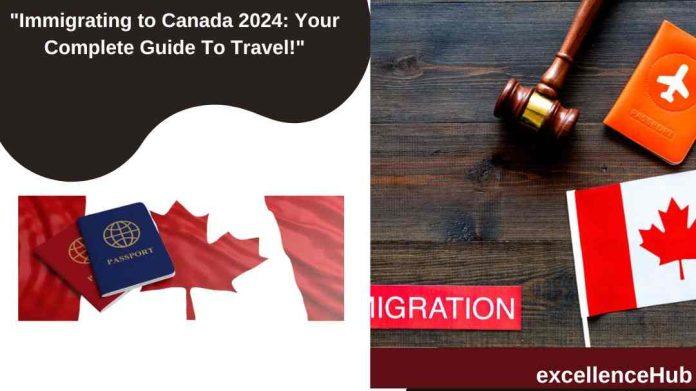“Immigrating to Canada 2024: Your Complete Guide!” Canada has always been a beacon for individuals looking for a new beginning in a friendly and diversified environment. You are not alone in thinking about immigrating to Canada. But with opportunity comes adversity. Let’s look at the procedure, history, and future of Canadian immigration and Immigrating to Canada.
Canadian Immigration: A Brief History
Canada’s unique tapestry is woven with the threads of several cultures, originating with indigenous peoples who have inhabited the area for millennia. European discovery and colonization paved the way for a cosmopolitan culture, attracting waves of immigrants seeking economic opportunity, fleeing political instability, and escaping religious persecution. Immigrating to Canada, Official policies such as the Canadian Citizenship Act of 1947 and the Immigration Act of 1952 made it possible for skilled workers, entrepreneurs, and refugees to settle in Canada. In 1971, Canada adopted multiculturalism as a defining national identity, which influenced its response to immigration.
Also Check: Study China with Schwarzman Scholarship 2025–26 in (Fully Funded)
The Canadian Immigration System Today
Today, Canada’s immigration system is a well-oiled mechanism that welcomes people who will contribute to the country’s economic, social, and cultural fabric. Key programs include:
- The Express Entry System, launched in 2015, processes applications for skilled workers across federal programs.
- Provincial Nominee policies (PNPs) allow provinces and territories to nominate candidates for permanent residency based on their special requirements and immigration policies.
- Family Sponsorship: Canadian citizens and permanent residents can sponsor family members for immigration, with a focus on reuniting.
- Canada is committed to giving shelter for persons escaping persecution, conflict, and human rights violations.
Opportunities await in Canada.
Canada’s dynamic economy provides immigrants with chances for job advancement and financial security, particularly in industries such as information technology, healthcare, engineering, and finance. Immigrants may live a high-quality life in a safe and inclusive environment because to universal healthcare, great education, and social services. Canada’s multiculturalism policy assures that newcomers can keep their cultural identities while easily integrating into society.
Challenges and Considerations
While Canada offers a promising future, navigating its immigration procedure can be difficult. Immigrants confront a variety of hurdles, including rigorous eligibility standards and adapting to a new culture and language. Accessing support services, forming social networks, and finding work are all necessary for successful integration. Furthermore, immigrants may face difficulties in having their foreign qualifications recognized, especially in major cities with severe competition and high living costs.
Future of Canadian Immigration
As Canada’s immigration policy evolve, they will prioritize diversity and family reunification while addressing demographic changes. Immigrant integration initiatives, such as language training and employment services, will be strengthened. Canada remains committed to protecting refugees and collaborating with international partners to address global humanitarian needs.
How to Apply for Canadian Immigration
Ready to take the plunge? Here’s a step-by-step guide to applying for Canadian immigration:
- Check Eligibility: Determine which program is ideal for you based on factors including age, education, work experience, and language skills.
- Gather documents: Gather all required documents, such as passports, educational certificates, language test scores, and proof of job experience.
- Create an online profile: Create a profile on the Immigration, Refugees, and Citizenship Canada (IRCC) website and enter your information accurately.
- If you receive an Invitation to Apply (ITA), submit your application with the essential documents and carefully follow the instructions provided.
- Complete medical examinations and security checks: Take medical exams and receive police clearance certifications from any countries you’ve lived in.
- Wait for the decision: Be patient, as processing timeframes may vary.
Once approved, you’ll obtain a Confirmation of Permanent Residence (COPR) and a permanent resident visa. Follow the instructions to complete the process and formally relocate to Canada. - Settle in: Find accommodation, a job, and enjoy life in your new home. After satisfying the residency requirements, you can apply for Canadian citizenship. Immigrating to Canada 2024.
- Ready to embark on your Canadian journey? Start your application today!


